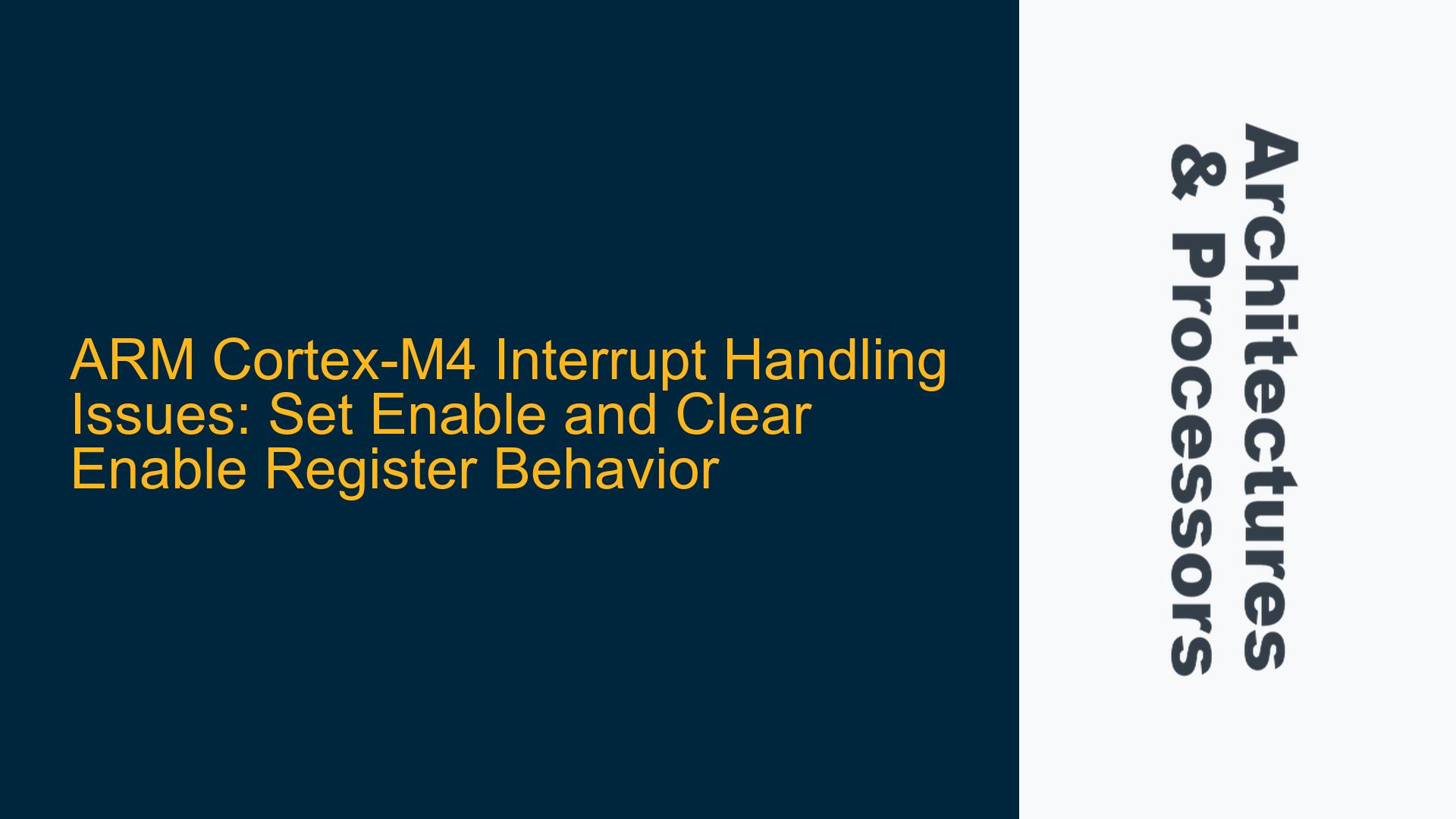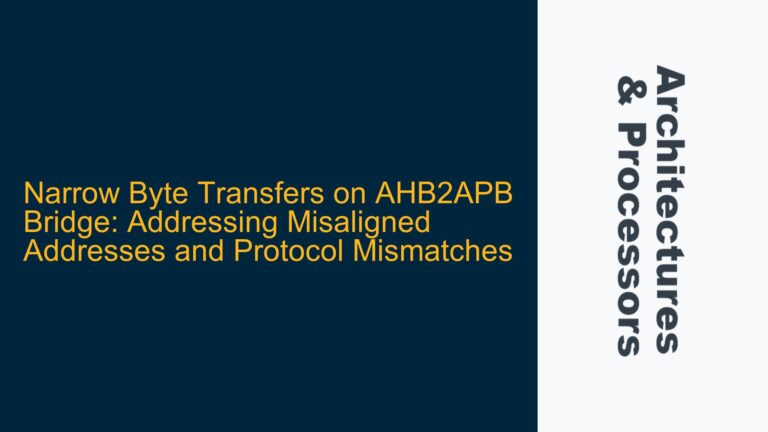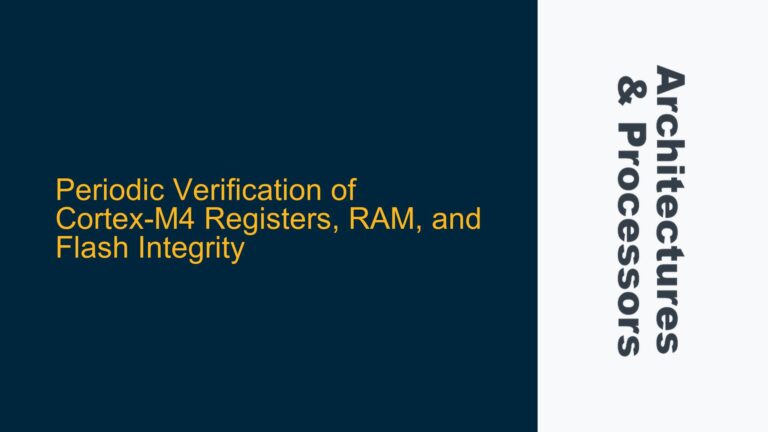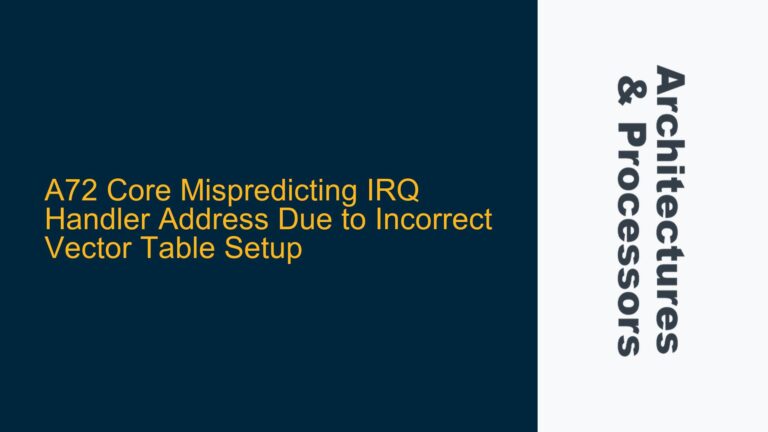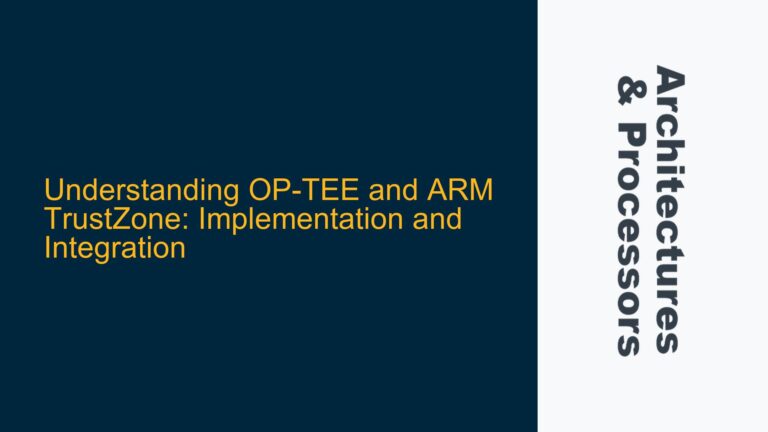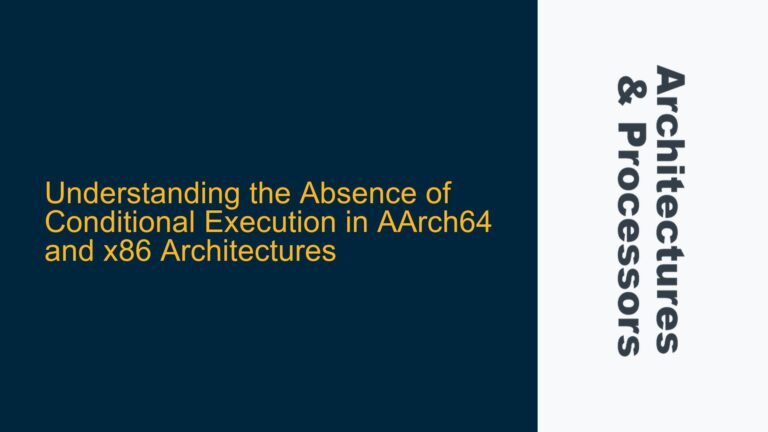NVIC Set Enable and Clear Enable Register Behavior in Cortex-M4
The behavior of the Nested Vectored Interrupt Controller (NVIC) in ARM Cortex-M4 processors, particularly regarding the Set Enable (ISER) and Clear Enable (ICER) registers, can be a source of confusion for developers. When enabling an interrupt using the NVIC_ISER register, it is observed that the corresponding bit in the NVIC_ICER register also appears to be set. This behavior is not a bug but rather a feature of the NVIC design. The NVIC_ICER register, when read, reflects the current state of the interrupt enable bits. If an interrupt is enabled, the corresponding bit in the NVIC_ICER register will read as ‘1’. This is because the NVIC_ICER register is designed to show the current state of the interrupt enable bits when read, and to disable interrupts when written to. This dual functionality is intentional and is documented in the ARM v7-M Architecture Reference Manual.
The confusion often arises when developers expect the NVIC_ICER register to only reflect changes made through writes to it, rather than also reflecting the current state of the interrupt enable bits. This behavior is particularly important to understand when debugging interrupt-related issues, as it can lead to misinterpretation of the interrupt state. For example, if a developer reads the NVIC_ICER register after enabling an interrupt and sees that the corresponding bit is set, they might mistakenly believe that the interrupt has been disabled, when in fact it has been enabled.
Race Conditions and Interrupt Handling in Cortex-M4
One of the most common issues encountered when working with interrupts on the Cortex-M4 is the occurrence of race conditions. A race condition can occur when the timing of interrupt handling and the clearing of interrupt flags are not properly synchronized. This can lead to unexpected behavior, such as receiving multiple interrupts for a single event or missing interrupts altogether.
In the context of the Cortex-M4, a race condition can occur between the clearing of an interrupt at the peripheral level and the return from the Interrupt Service Routine (ISR). If the interrupt is cleared at the peripheral but the ISR has not yet completed, the interrupt may be re-triggered before the ISR has fully exited. This can result in the ISR being entered multiple times for what should be a single interrupt event.
To mitigate this issue, it is recommended to add a dummy read or write operation to the peripheral after clearing the interrupt request. This ensures that the interrupt request is fully cleared before the ISR exits. Additionally, using Data Synchronization Barriers (DSB) can help to ensure that all memory operations, including interrupt flag clearing, are completed before the ISR exits. This approach can help to prevent race conditions and ensure that interrupts are handled correctly.
Implementing Atomic Interrupt Enable/Disable with Separate Set and Clear Registers
The ARM Cortex-M4 architecture employs separate Set Enable (ISER) and Clear Enable (ICER) registers for managing interrupt enable states. This design choice is intentional and serves to avoid race conditions that could arise from read-modify-write (RMW) operations on a single interrupt enable register. When an interrupt enable state is modified using a single register, a RMW operation is required, which can lead to race conditions if the interrupt is preempted by a higher priority interrupt during the modification process.
With separate ISER and ICER registers, the enable and disable operations can be performed atomically, without the need for RMW operations. This ensures that the interrupt enable state is modified in a single, uninterruptible operation, preventing race conditions. For example, if an ISR modifies the interrupt enable state using the ISER or ICER registers, a higher priority interrupt cannot preempt the operation and modify the same register, leading to inconsistent states.
The atomic nature of the ISER and ICER registers is particularly important in real-time systems where timing and predictability are critical. By using separate registers for enabling and disabling interrupts, the Cortex-M4 ensures that interrupt handling is both efficient and reliable. Developers should be aware of this design feature and use the ISER and ICER registers appropriately to avoid potential issues with interrupt handling.
Handling Pending Interrupts and Debouncing in Cortex-M4
When working with interrupts on the Cortex-M4, managing pending interrupts and implementing debouncing mechanisms can be challenging. Pending interrupts are those that have been triggered but have not yet been serviced by the processor. In some cases, disabling an interrupt does not clear its pending status, which can lead to unexpected behavior if the interrupt is re-enabled before the pending status is cleared.
To address this issue, it is important to clear the pending status of an interrupt before re-enabling it. This can be done using the NVIC_ICPR (Interrupt Clear Pending Register). Additionally, implementing a debouncing mechanism can help to prevent multiple interrupts from being triggered by a single event, such as a button press. A common approach to debouncing is to disable the interrupt upon the first trigger, start a timer, and then re-enable the interrupt after a delay. This ensures that any bouncing effects from the button press are ignored, and only a single interrupt is generated.
However, care must be taken when re-enabling the interrupt, as a pending interrupt may still exist. To prevent this, the pending status should be cleared before re-enabling the interrupt. This can be done using the NVIC_ICPR register. Additionally, using Data Synchronization Barriers (DSB) can help to ensure that all pending interrupts are cleared before the interrupt is re-enabled. This approach can help to ensure that interrupts are handled correctly and that debouncing is effective.
Debugging Interrupt Issues in Cortex-M4
Debugging interrupt-related issues on the Cortex-M4 can be complex, particularly when dealing with race conditions, pending interrupts, and debouncing. One of the key tools for debugging interrupt issues is the use of breakpoints and watchpoints in the debugger. By setting breakpoints in the ISR and watching the values of the NVIC registers, developers can gain insight into the behavior of the interrupt handling system.
Additionally, using trace tools such as the Embedded Trace Macrocell (ETM) or Serial Wire Output (SWO) can provide real-time information about the execution of the ISR and the state of the NVIC registers. This can help to identify timing issues and race conditions that may not be apparent when using breakpoints alone.
Another useful technique for debugging interrupt issues is to use a logic analyzer to monitor the interrupt signals and the behavior of the peripheral generating the interrupt. This can help to identify issues such as bouncing or unexpected interrupt triggers. By combining these tools and techniques, developers can effectively debug interrupt-related issues and ensure that their Cortex-M4-based systems operate reliably.
Best Practices for Interrupt Handling in Cortex-M4
To ensure reliable interrupt handling on the Cortex-M4, it is important to follow best practices when designing and implementing interrupt service routines. One of the key best practices is to keep ISRs as short and efficient as possible. Long ISRs can lead to increased latency and can make it more difficult to debug and maintain the code. Instead, ISRs should perform only the minimum necessary processing and defer any additional processing to the main application loop or a lower priority task.
Another best practice is to use the appropriate NVIC registers for enabling, disabling, and clearing interrupts. As discussed earlier, the use of separate ISER and ICER registers can help to avoid race conditions and ensure atomic operations. Additionally, using the NVIC_ICPR register to clear pending interrupts before re-enabling them can help to prevent unexpected behavior.
Finally, it is important to thoroughly test interrupt handling code under a variety of conditions, including high interrupt loads and edge cases. This can help to identify and resolve issues before they occur in the field. By following these best practices, developers can ensure that their Cortex-M4-based systems handle interrupts reliably and efficiently.
Conclusion
Understanding the behavior of the NVIC Set Enable and Clear Enable registers, managing race conditions, and implementing effective debouncing mechanisms are critical for reliable interrupt handling on the ARM Cortex-M4. By following best practices and using the appropriate tools and techniques, developers can ensure that their interrupt handling code is robust and efficient. The Cortex-M4’s design, including the use of separate ISER and ICER registers, provides the necessary features to handle interrupts atomically and avoid common pitfalls. With careful design and thorough testing, developers can create reliable and efficient interrupt handling systems for their Cortex-M4-based applications.
